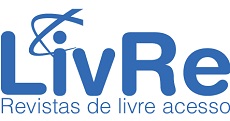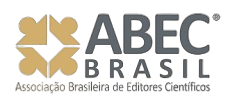Characterization and thermal analysis of metalworking sludge as a partial substitute for clays in ceramic production
DOI:
https://doi.org/10.36661/2596-142X.2025v7n1.14672Keywords:
Sustainable Management, Industrial Sludge, Pollutant Prediction, Waste Valorization, Clay SubstitutionAbstract
This study evaluates the feasibility of using sludge from the metalworking industry (SMWI) as a partial substitute for clays in producing red ceramics for civil construction. The analysis of the white goods production process predicted the components of SMWI, potentially reducing the need for additional chemical analyses. According to the chemical analyses provided, SMWI is a non-hazardous solid waste, but not inert, due to the presence of aluminum, chlorine, and phenols, by Brazilian standards. The oxide composition of SMWI showed compatibility with the studied clays and data from the literature, suggesting its potential as an additive in ceramics. Rich in CaO and Al2O3, SMWI can enhance the mechanical strength of ceramics, although excessive addition may increase water absorption. Loss on ignition tests, thermogravimetry, and SEM-EDS analyses on SMWI and pure and 5% SMWI-added clays revealed the loss of volatile compounds and the formation of thermostable clay minerals. However, its distinct composition, with lower levels of Fe2O3 and SiO2, and the need for adequate homogenization, requires caution to avoid impacts on the final properties of the ceramic products, such as water absorption and mechanical strength. Thus, the use of SMWI as a ceramic additive presents itself as a sustainable and viable alternative, although further studies are necessary to validate its application in compliance with Brazilian technical standards.
Downloads
Published
Issue
Section
License
-
O(s) autor(es) autoriza(m) a publicação do artigo na revista;
-
O(s) autor(es) atesta (m) que a contribuição é original e inédita e que não está em processo de avaliação em outra(s) revista(s);
-
A revista não se responsabiliza pelas opiniões, ideias e conceitos emitidos nos textos, por serem de inteira responsabilidade de seu(s) autor(es);
-
É reservado aos editores o direito de proceder ajustes textuais e de adequação do artigo às normas da publicação;
-
Autores mantêm os direitos autorais e concedem à revista o direito de primeira publicação, com o trabalho simultaneamente licenciado sob a Creative Commons Atribuição 4.0 Não Adaptada, que permite o compartilhamento do trabalho com reconhecimento da autoria e publicação inicial nesta revista













